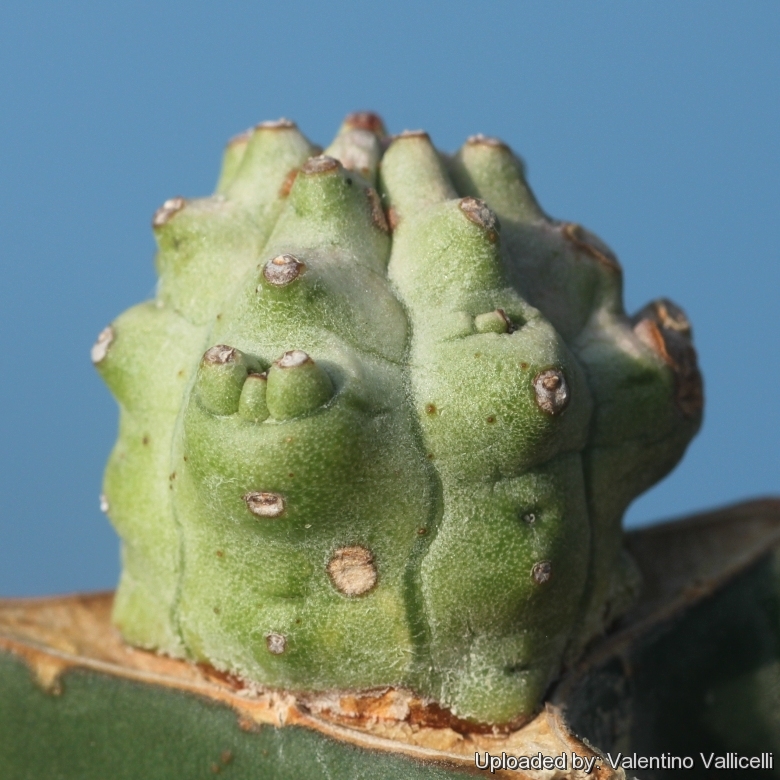
Euphorbia mosaica Photo by: Valentino Vallicelli
Origin and Habitat: Somalia ( Erigavo s 61km, Moledera)
Habitat: It is found in relatively steep slopes on gypseous soils, very well camouflaged and growing flush with the ground. It inhabits in association with a number of other steno-endemics, such as Aloe molederanaSN|31654]]SN|31654]].
Synonyms:
Description: Euphorbia mosaicaSN|22220]]SN|22220]] is a low, mound forming succulent composed of rounded masses up to 8 cm in height and 15 cm in width, remembering a mosaic when seen from above. It is a slow grower.
Stem: Stems small thin blue grey with 5-7 ribs. The ribs in the cross-section are rouded, with small shallow tubercles. On the tops of the tubercles it is possible to see leaves scar traces.
Flowers: Several between the tubercles, closer to the tips of the stems, small, threadlike, greenish yellow in colour.
Cultivation and Propagation: It is a slow growing and tricky species to cultivate on its own roots. It responds well to warmth during its active growth period in the late spring and summer months.
Soil: It grow well in a very draining mineral potting substrate.
Waterings: It can be watered moderately all year around (except in the coldest month of the winter, as it rots easily (especially if too wet). During the summer it enjoys average feeding and watering.
Exposure: It does need a lot of light to keep its compact growth-form.
Hardiness: Very tender; protect from frost.
Propagation: It is usually grafted onto sturdier stocks such as Euphorbia canariensisSN|16003]]SN|15754]] or Euphorbia resiniferaSN|15754]]SN|16003]] to make it grow faster and also to prevent rotting. It may also be propagated by cuttings (It branches enthusiastically and offsets are readily available) if you remove an offset, remember to let it dry for a week or so, letting the wound heal (cuttings planted too soon easily rot before they can grow roots). It is better to wash the cut to remove the latex.
Warning: As with all other Euphorbias when a plant get damaged it exudes a thick white milky sap known as latex. This latex is poisonous and may irritate skin. Pay extreme attention not to get any in your eyes or mouth. Cultivated plants must be handled carefull











